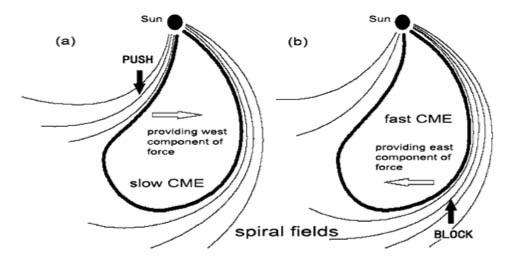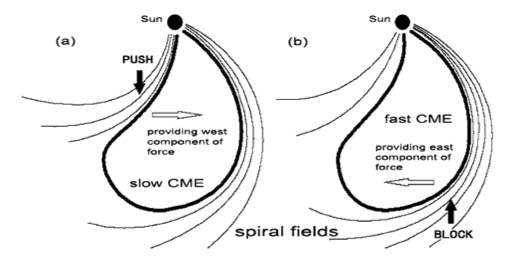Quoted from: https://ccmc.gsfc.nasa.gov/models/modelinfo.php?model=DIPS
Model Description
The DIPS model is designed to predict the trajectory of a CME in ecliptic plane. The basic idea is that the CME trajectory in interplanetary space may be deflected due to the velocity difference between the CME and the ambient solar wind as shown by the diagram (adopted from Wang et al., 2004) below. For a fast CME, the solar wind plasma and interplanetary magnetic field will be piled up from the west and ahead of it, leading to a net deflection force toward the east; for a slow CME, the picture is the opposite.

Model Input
CME speed (VCME) and the local solar wind speed (VSW) at certain radial distance(s) (r) during the outward propagation of the CME.
Optional input: Date and time, CME angular width (default is 60 deg) and initial longitude of the CME (default is 0 deg).
Model Output
A figure showing the trajectory of the CME in the ecliptic plane.
References and relevant publications
- Yuming Wang, Boyi Wang, Chenglong Shen, Fang Shen, and Noe Lugaz, Deflected propagation of a coronal mass ejection from the corona to interplanetary space, J. Geophys. Res., 119, 5117-5132, 2014.
- Wang, Yuming, Chenglong Shen, S. Wang, and Pinzhong Ye, Deflection of coronal mass ejection in the interplanetary medium, Sol. Phys., 222, 329-343, 2004.
CCMC Contact(s)
Peter MacNeice
301-286-2061
Developer Contact(s)
Yuming Wang
Chenglong Shen









